Oct 22, 2016 | advice, ANA, commentary, education, errors, exonumia
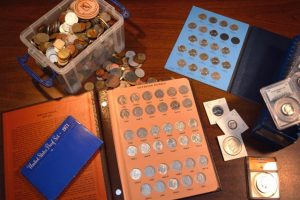 Although I owe you my impressions of the U.S. Mint’s Numismatic Forum, giving it the proper treatment I think it deserves has taken longer than expected. Rather, let me jump ahead to a recurring theme that takes over the conversation on the state of the hobby: Numismatics is a dying hobby of the old.
Although I owe you my impressions of the U.S. Mint’s Numismatic Forum, giving it the proper treatment I think it deserves has taken longer than expected. Rather, let me jump ahead to a recurring theme that takes over the conversation on the state of the hobby: Numismatics is a dying hobby of the old.
MYTH: Electronic transactions have taken over and hard currency is being used less.
FACT: Electronic transactions make up only 13-percent of retail purchases in the United States and 7.1-percent worldwide. Although the pundits like to point out that trillions of dollars change hands electronically, this includes non-consumer-related transactions such as bank transfers from one account to the other using the Automated Clearing House (ACH). If your paycheck is deposited directly into your account, it is transferred using the ACH system.
In real money, the International Monetary Fund estimates that the U.S. Gross Domestic Product (GDP), the total costs for all goods and services, to be $18,561,934,000,000 ($18.561 trillion). If 13-percent of that is electronic retail purchases, that means that $2,413,051,420,000 ($2.413 trillion) is made not using cash. What about the other $16.1 trillion dollars?
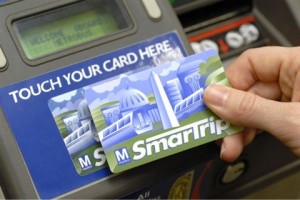 Depending on which report you read, electronic transactions should grow at a rate of 8-10 percent annually. Even if the U.S. GDP is on a pace to grow by only 1.4-percent, adding about $250 billion in electronic transactions will not make a significant dent in the rate of electronic transactions.
Depending on which report you read, electronic transactions should grow at a rate of 8-10 percent annually. Even if the U.S. GDP is on a pace to grow by only 1.4-percent, adding about $250 billion in electronic transactions will not make a significant dent in the rate of electronic transactions.
Of course, the U.S. are not spending $16 trillion in cash transactions, but both the U.S. Mint and the Bureau of Engraving and Printing are on course for record production years. Year-to-date, the U.S. Mint has produced $870,133,500 in circulating coins (not including half-dollar, dollar, and commemorative coins). For Fiscal Year 2015 (October 2014-September 2015) the BEP produced $166,302,000,000 ($166.302 trillion) in currency (not including $2 notes). Although some of the currency does replace worn notes (the BEP reports that 90-percent of $1 notes replace damaged notes) and a significant portion of the $100 notes are shipped to banks overseas, which represents quite a number of transactions.
Although electronic payment options make up 13-percent of all cashless transactions you have to remember that this market barely existed a few years ago. Even as banks and large retailers push to increase the number cashless transaction, there are problems that society faces when moving to a cashless retail system. The biggest problem is one of scale. The United States makes more money, spends more money, trades more money, and has more economic impact than any other country in the world. It is the world’s single largest economy with a strong capitalistic culture where most of the commerce is done with small businesses. Amongst all business, 55-percent of retail merchants are cash-only enterprises. They are too small to consider paying the 3-to-5 percent fees for using a credit card, known as the “swipe fee.” Of those that do take credit cards, at least 36-percent require a minimum purchase.
MYTH: The sharing economy is turning the economic world upside down changing the way we will pay for goods and services.
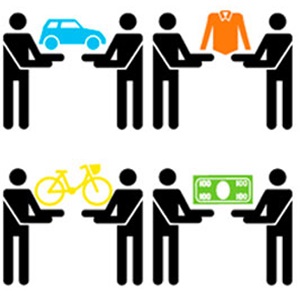 FACT: Human beings have been sharing and trading goods and services from the dawn of time. You killed an ox and have the hide left over. I have a lot of fruit I picked that I cannot eat. I will give you an amount of fruit and you give me the hide. Money was created as a medium of exchange when I did not want your fruit but wanted some of the goods someone else had. It was the pre-historic version of the three-way trade.
FACT: Human beings have been sharing and trading goods and services from the dawn of time. You killed an ox and have the hide left over. I have a lot of fruit I picked that I cannot eat. I will give you an amount of fruit and you give me the hide. Money was created as a medium of exchange when I did not want your fruit but wanted some of the goods someone else had. It was the pre-historic version of the three-way trade.
Some of us grew up trading. I remember trading a Mickey Mantle baseball card for a Jerry Koosman and two Donn Clendenon cards —one from Houston and the other from Montreal, just after the Mets traded for Clendenon. I thought I gave the kid a deal because 1969 turned out to be Mantle ’s last year.
What has changed since I made the trade? There has been a tremendous change in technology. While we set the price for the baseball cards we traded, now there are price guides, electronic markets, auctions, and online trading sites. Even in other categories, you might place a classified ad in a newspaper or an advertising rag like PennySaver or something like Uncle Henry’s in Maine. Now there are sites like Craigslist, AirBnB, Uber and Lyft that expands the market.
Pundits like to point to the sharing economy’s growth. The problem with the reports is that this version of the sharing economy has gone from nothing to something with a lot of press coverage. Anytime there is something shiny and new it grabs the attention of the public before they move on to the next distraction.
We share numismatics all of the time. We go to shows and display our collections for competitions. We enter registry sets to try to create a nice collection or even worst collection with the advent of “low ball” sets of coins of very low grades. We blog and read about other’s collections. We post finds to public forums and sometimes bring our collections to show off at club meetings.
Sometimes we even trade. Have you traded a few Barber dimes for a Barber half because you needed the half for your collection? How about three Morgan dollars for an elusive 1921-S Walking Liberty half-dollar?
The only difference between this and the new sharing economy is the lack of computer interface. Sometimes that human interaction is more fun than hiding behind a screen.
MYTH: People, especially millennials are not interested in collecting anything.
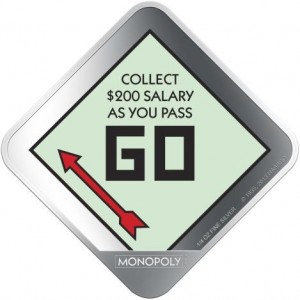
New Zealand Mint produces Monopoly coins for the Island nation of Niue. Did you pass Go?
One of the fastest growing sectors of this market is board games. While some games do incorporate electronics into their play, this new generation of gamers is finding that social gaming can be as much fun as their online endeavors.
Numismatics has never been a welcoming hobby for the mid-to-lower level collector. Dealers who are older may have a difficult time relating to younger and, frankly, a non-white demographic (see my post about one such incident here). It has created a culture of cranky older Caucasian collectors who think that their way is the only way to collect.
It is not just the dealers. Mainstream publishers put a lot of effort into creating references and collecting supplies that satisfy the market as being pushed by the dealers. Even worse, while the American Numismatic Association does recognize other aspects of numismatics, the fact that most of the Board of Governors are in the coin business with years of experiences in the coin business, that becomes the focus of the ANA.
It is time for the industry and its representative organization, the ANA, to remember that numismatics is more than coins. Currency, exonumia, scripophily, and even military medals are all part of numismatics. Concentrating on coins, especially coverage of high-value sales scares off many novices who may be willing to look at coins as a hobby. When I go out to schools in the Washington, D.C. metro area, I will bring enough Metro (the local transit system) tokens for everyone in the class. After buying a bulk bag of tokens, I have plenty to give away along with the story of how they were once used. But it allows me to show the students that numismatics is more than coins. I explain how I sit at junk boxes and at the tables of token dealers to find items from my hometown of New York. When I show them four pages of 2x2s with tokens and medals from New York and say that in three years I may have spent as much as $200, they seem to understand that you can have fun without spending a lot of money.
MYTH: We lost those who collected the state quarters forever.
 FACT: We also retained a lot of those collectors. Unfortunately, we damaged many others.
FACT: We also retained a lot of those collectors. Unfortunately, we damaged many others.
What made the state quarter program popular was that the way it was administered made everyone a stakeholder. Rather than dictating the design, states were encouraged to allow public participation to help decide on their quarter’s design. Contests and state pride went into the quarters that allowed each state to celebrate their home state. Ordinary people were brought into the process and ceremonies held in each state announcing the designs and on the release of the quarters.
Of course, the state quarters were also the hobby’s demise as television hucksters sold overpriced junk surrounding the sets. Colored coins and “special” sets were sold at high prices with the hint that they would only increase in value. When these people tried to cash in on their “investment” they found they overpaid, became angry, and may not come back. During this time, the ANA was nearly non-existent in the education process as it was undergoing its own internal political battles. Without someone to help stand up for the hobby to help educate the public, the industry suffered.
Although the ANA has improved in many areas, it continues to be about coins with a slant toward classic (pre-1965) and rare coins. The only modern coins that seem to get any amount of respect from the community are commemoratives, bullion, and errors. With the so-called modern era being 52 years old, it is time for the old and crusty of the numismatics industry to either get on board with that it is new to the new collectors or maybe it is time to consider retirement.
The lesson I have learned in numismatics as well in my business of buying and selling collectibles is that in order to expand any hobby it has to be made into something personal. Sports collectibles sell memories of your heroes. Space collectibles sell the mystique of outer space. Automobilia seems to have a fascination for a lot of people even as what was considered modern nameplates like Plymouth and Pontiac have gone the way of DeSoto and American Motors.
Hobbies have to also be interesting. Is it really interesting to collect a series of all of the same coins where the only difference is the date or mintmark? Again, why does a collection have to be biased for coins? Can someone have fun collecting So-called dollars, transportation tokens, or even unusual coins? I think about how much fun Charmy Harker might have had to put together her award-winning exhibit Penny Potpourri with things made out of pennies. If you have not seen her exhibit, you can find images here. It has to be one of the best exhibits I have ever seen because it is unusual. I like things that are different.
In order to get people interested in the hobby, you cannot introduce it to them by showing a 1909-S VDB Lincoln cent or a 1937-D 3-Legged Buffalo nickel as an example. Not only are these coins difficult to find and less affordable, but not everyone may be interested. I like to use my two-pages of 2×2 holders with a set of transportation tokens with every letter of the alphabet cut out of the center, except “Q” and “Z,” along with some that have shapes. When I tell someone I paid around $50 for the initial investment and can buy most tokens for less than $5 each, they want to know how they could get started.
Here are some ideas to help you start a new collection. You can only use these if you do so by recruiting a friend or relative who is not currently part of the hobby:
- If you want to start with coins, go find a folder of currently circulating coins and see who can fill their folder first only from pocket change. I recommend either Lincoln Memorial cents, which can be interesting finding S-mint circulating cents on the east coast, or Jefferson nickels (for fun, use Whitman Jefferson Nickel folder #2).
- Another idea for collecting coins is to make a collection based on a theme. Ideas for themes can be the year you were born, coins with an animal like buffalos, or create a type set that represents some of the subtle changes in a long series like Lincoln cents.
- There are more to exonumia than transportation tokens. If your state issued tax tokens in the early part of the 20th century then how about finding examples for a collection. Tokens are still being created for gaming, casino chips, parking tokens, or store tokens the pre-cursor to paper coupons. Advertising tokens can be a fun way to collect your hometown. Tokens with themes, shapes, and cutouts can be a lot of fun.
- Go beyond tokens to encased coins. Encased coins have been used as a private commemorative, advertising, and I even found one for an electric supply company that promised money off if you returned it to their store.
- You can collect elongated cents, also called squished pennies, from almost anywhere. Recently, I found a machine in the Philadelphia Mint’s gift shop. For 51-cents, each I was able to buy two souvenirs. Collecting elongateds also helps you keep the record of where you have been.
And I didn’t mention currency or scripophily. One cool idea would be to collect stock certificates representing what you might find on a Monopoly game board.
If you have other suggestions, send it as a comment!
Now go out and start a collection. Recruit a friend and do it together.
Selection of my New York collection
-
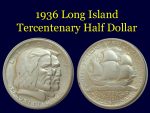
-
1936 Long Island Tercentenary Half-Dollar
-

-
1983 Brooklyn Bridge Centennial Medal issued by Brooklyn Union Gas
-

-
Medal from the opening of the Brooklyn Bridge in 1883
-

-
1956-D Encased Cent from the Chase Money Museum
-

-
A check from the First National Bank of Inwood (NY)
-
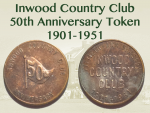
-
50th Anniversary medal from the Inwood Country Club.
-
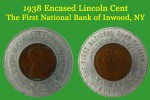
-
1938 Encased Cent from the First National Bank of Inwood (NY)
-

-
1984 LIRR Sesquicentennial Bronze Medal
-

-
TBTA Toll Token
-

-
Reverse of the Triborough Bridge and Tunnel Authority Rockaways resident token.
-
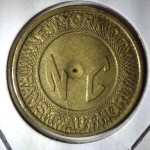
-
New York City Type 2 Subway Token error. It’s missing the punched out “Y”
-

-
2000-P New York quarter with Daniel Carr’s autograph on ICG label
-
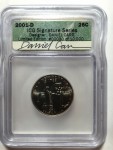
-
2000-D New York quarter with Daniel Carr’s autograph on ICG label
-
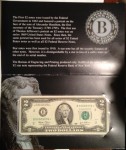
-
Series 2003 $2 Star Note from the Federal Reserve Bank of New York. Rosario Marin/John Snow signatures.
-

-
Series 2013 Uncirculated $1 Federal Reserve Note from the Federal Reserve Bank of New York
-

-
A&S Charge Token with account number
Feb 25, 2016 | cash, currency, dollar, errors, news, policy
The latest attack on the money in your pocket is the talk about eliminating the highest denomination banknotes. This discussion was intensified in the political policy world with the article by Lawrence Summers that appeared in The Washington Post. Summers is a professor at Harvard and had once been the Secretary of the Treasury and Director of the White House’s National Economic Council.
Summers cites a paper by Peter Sands of Harvard and students that claims to make a compelling case to stop issuing high denomination notes and possibly withdraw them from circulation because of its use in crime and corruption.
Crime is mostly a cash-based enterprise. Criminals do not use gold, checks, or credit cards. As those of us who use cash over other payment types understand, cash is more anonymous. Cash transactions can be used to perform untraceable transaction that could be used to evade taxes. Criminals use cash to avoid law enforcement and terrorists use cash to fund their activities outside of the monitoring of financial transactions. In fact, Sands notes that these criminals have nicknamed the €500 note the “Bin Laden.”
In order to carry out cash-based transactions is the ability to carry the cash. Sands’ paper and Summers’ article both say that lower denomination currency will make it difficult to carry large volumes of currency in order to make these transactions. Considering the weight of United States currency, carrying $1 million worth of $100 Federal Reserve Notes would weigh about 10 kilograms (22.0462 pounds). Using a 15 liters (just under 4 gallons) as the “standard” briefcase capacity, you could carry $1 million in 0.7 cases.
As a comparison, $1 million worth of $50 Federal Reserve Notes would require 1.4 briefcases and 3.5 briefcases when using $20 notes. If the $1 million was being paid using €500 notes, it would weigh 2.2 kilograms or about 4.85 pounds that takes up a quarter of a briefcase.

Comparison of the weight of the equivalent of $1 million using U.S. Federal Reserve Notes
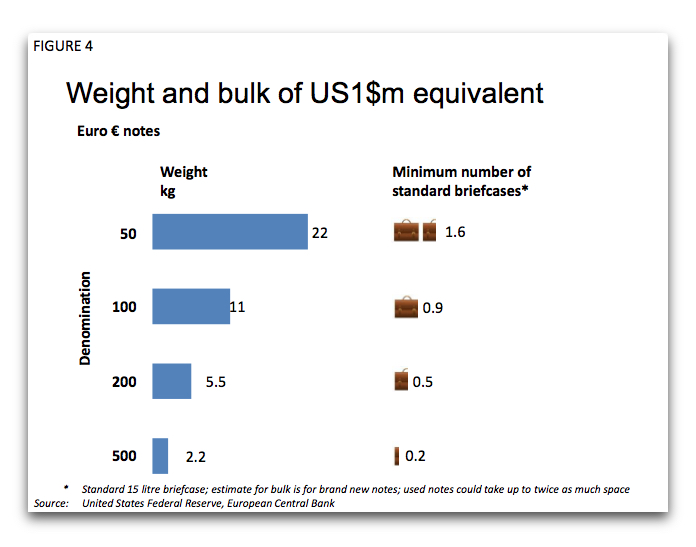
Comparison of the weight of the equivalent of $1 million using euro currency
Sands says:
By eliminating high denomination, high value notes we would make life harder for those pursuing tax evasion, financial crime, terrorist finance and corruption. Without being able to use high denomination notes, those engaged in illicit activities – the “bad guys” of our title – would face higher costs and greater risks of detection. Eliminating high denomination notes would disrupt their “business models”.
Summers agrees with Sands and even suggests that the baseline currencies, specifically the dollar and the euro, should “stop issuing notes worth more than say $50 or $100.” Both consider demonetizing these high denomination notes a step in the right direction.
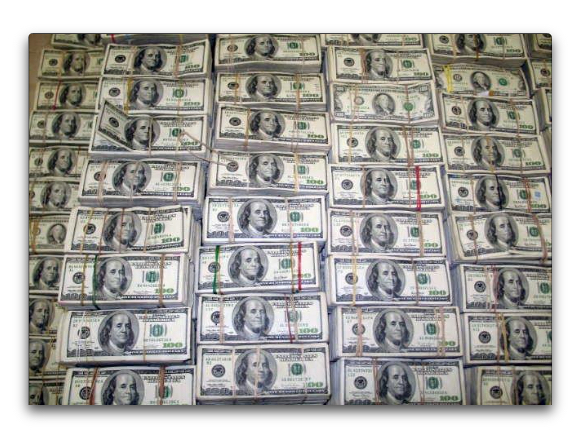
$207 Million in $100 notes seized as part of a drug raid in 2007
In the world of policy analysis there is the concept of the three-legged stool. The first leg is to identify the policy, which is what Sands’ paper does. Next would be to translate the policy idea into something that could be used as the basis for a law. The final step is something to drive the policy to be considered by the lawmakers in order to do something with the policy.
This is how the one cent coin went from being 95-percent copper to being copper-covered zinc. There was the idea to change the composition of the coin in order to save money. After the idea, there was the research and the law writing that went into changing the composition. As part of that second-leg exercise was the creation of the 1974 aluminum cent pattern. Finally, by 1982, the costs were so out of line that it became the driver that forced action.
Although the article and report has been well discussed as part of the financial press it is not likely to be acted on in the near future. It is only the first leg. It will take time before this stool gets its two other legs.
Images were copied from the report “Making it Harder for the Bad Guys: The Case for Eliminating High Denomination Notes,” by Peter Sands, et. al.
Sep 8, 2012 | Carson City, cents, coins, errors, fun, gold, silver
I was reading the article “How to follow the money in rare-coin collecting” at MarketWatch.com about the basics of collecting rare coins when I noticed that it pointed to a page withe a slideshow, “The $1 million penny and 7 more famous coins.”
The list has only one “reasonably priced” coin—that is a coin that someone with a little means could afford. It lists the an 1850 Double Eagle at $13,000. That started me to think about the potential to actually owning a few rare collector coins with value and something more align with my tastes. After thinking about this I came up with a list of my “10 Most Desired Coins Within Reason.” In this case, I defined reason as not being so rare that it could only be bought with the help of a good dealer and would not require bidding on it at a once-in-a-lifetime auction. I also set a limit of $5,000 on the price of any coin. I know this may limit the inventory to lower grade for some coins, but those lower grades could give the coin character.
Mostly in denomination and date order, here are Scott’s 10 Most Desired Coins Within Reason:
- 1793 Flowing Hair Chain Cent with AMERI. in Legend is basically amongst the first legal tender coins produced by the U.S. Mint. I know that there was an earlier run of half-dismes, but they were not real production runs. If I am going to produce a list like this, I am going to pick the coin I like and break one of my rules because even at its lowest grade, the coin will probably cost more than $10,000.
- 1909-S Indian Head Cent in Mint State Red. Even though the 1908-S was the first Indian Head cent struck in San Francisco, I am choosing the rarer of the two S-mint Indian Heads in Mint State Red. Of course, this may also break my budget but it would be no fun otherwise.
- 1909-S VDB Lincoln Cent may not be the most expensive Lincoln Cent (the 1914 is), but it is the first of the iconic series and part of the controversy started because of the “V.D.B” initials on the reverse. Fortunately, I already own one graded as VF-30BN by NGC.
- 1955 Double Die Obverse Lincoln Cent is the coin that sparked the interest in error collecting. It is remarkable to think that one coin, a mistake, created a new segment of the hobby. For me, I already own one graded AU-58BN by NGC that I really like.
- 1937-D 3-Legged Buffalo is a very cool coin. Aside that the Buffalo Nickel is one of my favorite coin designs, there is something intriguing about the story behind this coin. Fortunately, the one I own was graded VF-25 by NGC and the last of the ones I already own on this list.
- 1917 Type 1 Standing Liberty Quarter is a compromise because the 1916 would be too expensive. In order to add a type 1 design (with breast exposed), the 1917 version is more reasonably priced in higher grades.
- 1921 Walking Liberty Half Dollar would be the coin I would point to on this list as being my favorite design. For me, only the Saint-Gaudens Double Eagle come close to Adolph Weinman’s design. It should not surprise anyone that Weinman was one of Saint Gaudens’ students. The 1921 half dollars were almost an afterthought as the U.S. Mint was rushing to produce silver dollars and the 1921 fits the criteria to buy one in higher grades.
- 1878-CC Morgan Dollar in the GSA Holder because it is interestingly historic. The Morgan Dollar was authorized by the Bland-Allison Act that required the Treasury Department to buy silver from western mines and put them into circulation as silver dollars. It was passed after the Coinage Act of 1873, sometimes referred to as the “Crime of ’73,” demonetized silver and set the standard for gold as the backing of the national currency. Not only do you get the collectible from a western state near a western mine, but the GSA Holder is from the historic sales of the 1970s after the GSA started pulling coins out of storage in buildings long forgotten.
- 1908 Indian Head Gold Half-Eagle because if you make a list like this, there has to be some gold on it. If I am going to do a gold coin, I want the only coin whose design is incuse to the coin. Bela Pratt Lyon’s incuse Indian Head design is unique and nicely available in its first year of mintage.
- 1907 No Motto Saint Gaudens Double Eagle because this list cannot be complete with the other of the two most iconic designs ever made for a circulating coin. Since 1907 is the first year, this is the most affordable of the three types made that year and is more available than the high-relief versions.
Do you have a similar list? Add it to the comments below.
Sep 25, 2011 | cents, errors, history
 In the world of collecting, collecting coins with errors is a relatively new specialty. The specialty can be traced to the discovery of the famous 1955 Lincoln Cent Doubled Die Obverse (DDO), known as The King of Errors. Finding this coin lead to collectors to search for errors, varieties, and anything out of the ordinary.
In the world of collecting, collecting coins with errors is a relatively new specialty. The specialty can be traced to the discovery of the famous 1955 Lincoln Cent Doubled Die Obverse (DDO), known as The King of Errors. Finding this coin lead to collectors to search for errors, varieties, and anything out of the ordinary.
What is a “Doubled Die?”
In order to strike coins, the U.S. Mint creates dies from hubs that contain the engraved image of the coins. The hubs are pressed into the dies to transfer the image. In years past, the U.S. Mint used to use what they called a two-squeeze process to make sure the die had a full image. This meant that when pressing the hubs into the dies, the die makers squeezed the two parts twice.
Sometimes, the process does not go smoothly and mistakes are embedded in the dies. In the case of the 1955 DDO Lincoln Cent, the hub and die did not line up correctly on the second squeeze. The result was lettering that appeared shifted or doubled.
Initial Reaction to the Coin
When the coin was discovered, there were two reactions. One group of people saw the coin as an exciting find and wondered whether it happened on any other coins. Another group was not as happy. They referred to the coin as “spoiled” and refused to acknowledge it as a valid collectible. Some considered the coin so unremarkable that one club publication wrote how they were having a hard time selling the coins for one dollar each.
A New Hobby Segment is Born
Those who were excited by the new find began to form clubs dedicated to the finding and education of errors and other variety in U.S. coins. They started the Collectors of Mint Errors (COME) club in 1956. As the nascent club tried to find its footing in the hobby, two factions began to form around different error and variety types. COME disbanded in 1960 because of the in fighting between the two organizations.
Some former members of COME came together again in 1963 to form the Collectors of Numismatic Errors (CONE). The people who formed CONE focused mostly on die varieties such as doubled dies, repunched mintmarks, major die breaks, die cracks, and die chips. Other collectors who were more interested in major minting errors like the 1955 DDO Lincoln Cent formed the Numismatic Error Collectors of America (NECA).
The two clubs existed for many years as rivals believing their form of collecting errors was better than the other. During this time, both clubs provided a lot of research into errors and varieties and how they could have occurred. The publications from both clubs continue to be the basis of the knowledge still used today.
Combining Forces
In 1980, the two organizations began to find common ground and discovered that it was better to work together than against each other. As the two clubs started to work together, many collectors became members of both clubs. To strengthen the hobby, both clubs voted to merge in 1983 to form the Combined Organizations of Numismatic Error Collectors of America (CONECA).
Finding Errors and Varieties
Today you can find error coins at your local coin store or by contacting a dealer specializing in errors and varieties. CONECA members will tell you that the thrill of finding errors is in the hunt. Error collectors use magnifying loupes, a good light source, and a lot of patience to examine coins to find something out of the ordinary. While there are some errors that are as visible as the 1955 DDO Lincoln Cent, others can be as subtle as outline of a small crack in the die, imperfections caused by two dies striking because the machine did not place a blank planchet properly between the dies, or the wrong die was used to strike the coin.
Errors can be found on any type of coin from any era. The error collecting community became excited when the processing of the new Presidential Dollars did not include the edge lettering; the edge letters were not aligned properly or doubled. While the U.S. Mint has improved the minting process, error collectors continue to find errors every time new coins are issued.
Starting an Error Collection
Anyone who wants to start searching for errors and varieties might want to buy a copy of Strike It Rich With Pocket Change by Brian Allen and Ken Potter published by Krause Publications (e-reader versions available). Now in its third edition, Strike it Rich will show you what to look for when you examine the coins in your pocket. According to the authors, a collector found a double die cast 1969 Lincoln cent in a roll of coins. When it was auctioned in 2008, it sold for $126,500.
Another great resource is Cherrypicker’s Guide by Bill Fivas and J.T. Stanton published by Whitman Publications. The fifth edition published in 2008 has more pictures, better descriptions, and a more complete resource with additional prices realized from various auction sources. A new edition is due later this year and should be available in e-reader formats.
Do not forget the resources of CONECA, which could be found on their website at conecaonline.org.
The 1955 DDO Lincoln Cent Today
As a coin desired by all types of collectors, a mid-grade coin you could have bought for $1 in 1960 is worth around $1,500 today. It is a coin that has held its value even during the current economic downturn but has not seen significant appreciation in the last ten years. Collectors will be happy the one they own will maintain its value. Investors should look to the highest graded coins that are designated as Red (full mint luster) or Red-Brown (some light copper oxidation) for better future returns.
Jul 17, 2009 | errors, state quarters, video
Rick Snow, noted researcher of Indian Cents and die varieties, carefully examined the high-leaf and low-leaf varieties of the Wisconsin State Quarter. Although mainstream media stories have reported this as an accident, Snow analyzes the coins under an electron microscope in order to do forensic analysis.
Snow concludes that the leaf was made with the same tool in a similar manner by a Denver Mint insider with access to the dies. Here is a video Snow produced about his analysis:
I am not sure if this is the “definitive answer,” but it is one of the better theories I have seen.
Dec 4, 2008 | errors, history, medals
The University of Georgia is the nation’s oldest land grant university. The Georgia legislature approved the land grant measure in 1784 and the college was chartered in 1785. The first Board of Trustees meeting was held in 1786 and elected Abraham Baldwin as the college’s first president. Baldwin, originally from Connecticut, was a Yale graduate who moved to Georgia in 1784 and was asked to help draft the school’s original charter.
When the Board of Trustees decided to open the university in 1801, they selected a site. John Milledge purchased 633 acres of land in northeast Georgia and donated it to the Board of Trustees. Part of the land was developed into the town of Athens, the rest is still owned by the University.
Josiah Meigs was named president in 1801 and the Board of Trustees named the first college Franklin College in honor of Benjamin Franklin. Although the charter named the school the University of Georgia, it was known as Franklin College until 1859 when the College of Agriculture and Environmental Sciences was founded. Meigs held the first classes under a tree on what is now called North Campus. While classes were held, log buildings were hastily built as temporary structures until permanent buildings would be built.
The first permanent building was modeled after Connecticut Hall at Yale University. When it was completed in 1805, it housed classrooms, administrative offices, and dormitories. Today, that building is called Old College. Since the 1950s, it has been used as the administrative offices for the Franklin College of Arts and Sciences.
 One evening, I was searching a popular online auction site looking for something to add to my American Revolution Bicentennial collection. While searching, I found this medal for the bicentennial of my undergraduate Alma Mater (see image on right). As an alumnus of the University of Georgia, I had to buy this medal.
One evening, I was searching a popular online auction site looking for something to add to my American Revolution Bicentennial collection. While searching, I found this medal for the bicentennial of my undergraduate Alma Mater (see image on right). As an alumnus of the University of Georgia, I had to buy this medal.
Other than the subject, the medal had an interesting because of an error: the lettering on the reverse is doubled (click image to enlarge). It looks as if the dies were punched then repunched with new spacing in the lettering. While it was described in the auction listing, I had to see the medal in hand to try to understand how this error occurred. Even in-hand, it is difficult to tell. It looks as if the dies were re-punched after the letters were reset—as if someone did not like the layout and tried to change it after the dies were created.
What was not described in the auction listing was the doubling I found on the obverse. The error was very subtle and would not have been noticed by someone who was not familiar with the University of Georgia. While examining the medal, I noted that the school’s motto is on the tree’s trunk: Et docere et rerum exquirere causas (To teach, to serve, and to inquire into the nature of things).
Looking just above the motto, I saw that the “200” was doubled and above that, “To Inquire,” was also doubled. Curiosity brought out my loupe and examined the branches for the other two parts of the motto and found “To Teach” above the lower-left branch of the tree and “To Serve” above the lower-right branch. All are doubled! These are clearly re-punched into the dies.
Aside from the subject, the “errors” are fascinating. It is like getting two collectibles in one medal.
HOW BOUT THEM DAWGS!
Aug 16, 2008 | coin covers, errors
An interesting part of coin collecting is to find a different niche that adds more to the collection than just the coin. I started with coin covers when the US Mint introduced them for various coins, including the 50 State Quarters series. Then I found that coin covers are popular in Europe, specifically in Great Britain and Australia where they refer to these collectibles as philatelic numismatic covers (PNC), to distinguish them from others like first day covers (FDC).
 Recently, I was searching for PNCs on that famous online auction website when I came across an interesting cover. It was postmarked in 1972 and included a coin with an off-center strike. I did not know much about the cover but purchased it anyway because it had that “oh neat” quality.
Recently, I was searching for PNCs on that famous online auction website when I came across an interesting cover. It was postmarked in 1972 and included a coin with an off-center strike. I did not know much about the cover but purchased it anyway because it had that “oh neat” quality.
When I received the cover, I examined it closely. It appears to be a souvenir from the Error-A-Rama Error Coin Convention held in 1974 at the El Cortez Hotel in San Diego. The convention is sponsored by the Numismatic Error Collectors of America, one of the two clubs that were merged to form today’s Combined Organizations of Numismatic Error Collectors of America (CONECA). The stamp was the common 8-cent stamp for the day and the postmark was made on the first day of the convention.
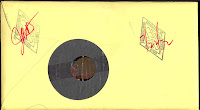 The coin is a Lincoln Cent that was struck 90-percent off center. The coin is held in place by a piece of cellophane tape on the reverse wit the entire inner card being wrapped in plastic. The envelope is sealed with the logo of the San Diego club and initials on the flap.
The coin is a Lincoln Cent that was struck 90-percent off center. The coin is held in place by a piece of cellophane tape on the reverse wit the entire inner card being wrapped in plastic. The envelope is sealed with the logo of the San Diego club and initials on the flap.
To find out more information, I wrote to several error experts sending images of the cover. I received a response from noted error expert and dealer Fred Weinberg. Weinberg said that the initials on the back of the cover are of Jim Heine, one of the organizer’s of the San Diego error club—one of three Southern California error clubs of the late 1960s through the mid 1970s.
“Covers like this were signed to both ‘authenticate’ the item,” Weinberg wrote, “and to show that the envelope hadn’t been opened or tampered with.”
Weinberg reports that these covers were issued for the Error-A-Rama shows in the 1970s. While there are no records of the number of covers made, Weinberg estimates that “at least 100-200 or so covers were made up” He also said that Heine also sold his own series of error covers with different error coins.
Aside being an interesting collectible, it is wonderful to be part of a hobby where you can email a leading expert for more information. I met Fred Weinberg at the World’s Fair of Money in Baltimore and thanked him in person. But I would like to repeat my appreciation here: THANK YOU, FRED!
Jul 5, 2008 | coins, errors, US Mint
Now that we have seen the fireworks and enjoyed our barbecues, it is time to add a numismatic touch to the celebration. This one is a new purchase of a 1976 Type 2 Eisenhower Dollar with an error at the US Mint.
Struck in 1975 and 1976, the dollar, Kennedy Half-Dollar, and Washington Quarter were minted with the dual date 1776-1976 and commemorative reverses designed by Dennis Williams to honor the nation’s bicentennial. In 1975, the lettering on the Eisenhower Dollars had a bolder reverse that did not strike well. For 1976, the dies were changed and the letters were thinned giving us the Type 2 variety.
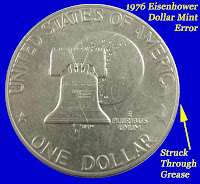 Thirty-two years later, I purchased a 1976 Type 2 dollar with an error from the US Mint. The dollar in the image on the right, you can see the lettering in “AMERICA” disappearing. The star after the word is also missing. This error is called strike through grease filled dies.
Thirty-two years later, I purchased a 1976 Type 2 dollar with an error from the US Mint. The dollar in the image on the right, you can see the lettering in “AMERICA” disappearing. The star after the word is also missing. This error is called strike through grease filled dies.
Strike through grease errors are relatively common and only add a small premium to the value of the coin. They occur during the Minting process when Mint employees apply a thin layer of grease on the dies to prevent the newly struck coins from sticking to the die after being hit with more than 40 tons of pressure. When the grease is not applied evenly, it creates a buildup. Those areas where the grease is applied too thickly prevents raised elements from striking properly.
This is not a commentary on the US Mint or the Independence Day celebration. Just something neat I found to add to the patriotic definition of the day. Enjoy your weekend and I hope you find something neat in coins, too.
Jun 29, 2008 | coins, errors, medals
Error collecting is an interesting part of the hobby. Combined with variety collectors, those interested in finding coins that are not what the U.S. Mint intended is a specialty that requires a bit of education and persistence. Some of the errors and varieties collectors look for are doubled dies, repunched mint marks, clipped planchets, off-centered coins, off-metal coins, strike-throughs, and even differences in one set of dies from another.
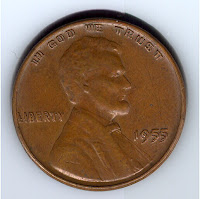 Error collecting is a relatively new specialty. The specialty can be traced to the discovery of the famous 1955 Lincoln Cent Double Obverse, now called the king of errors. Its discovery lead to people beginning to search for errors, varieties, and anything out of the ordinary.
Error collecting is a relatively new specialty. The specialty can be traced to the discovery of the famous 1955 Lincoln Cent Double Obverse, now called the king of errors. Its discovery lead to people beginning to search for errors, varieties, and anything out of the ordinary.
As a result, two organizations were formed to serve various collectors. After two decades of competition, they joined forces to create the Combined Organizations of Numismatic Error Collectors of America (CONECA). CONECA now provides education services, publications, and attribution services. Its membership are responsible for some of the definitive guides to errors, including the Cherrypicker’s Guide to Rare Die Varieties by J.T. Stanton and Bill Fivaz.
 This year marks the 25th Anniversary of CONECA. To commemorate this milestone, CONECA has created a medal that will be produced in silver, silver clad, and bronze. What makes these medals special is that CONECA will be offering various “error” versions of the medals. The five variety of errors will include an off-center and various form of double strikes. You can also buy a medal that does not simulate an error.
This year marks the 25th Anniversary of CONECA. To commemorate this milestone, CONECA has created a medal that will be produced in silver, silver clad, and bronze. What makes these medals special is that CONECA will be offering various “error” versions of the medals. The five variety of errors will include an off-center and various form of double strikes. You can also buy a medal that does not simulate an error.
For ordering information, see the CONECA website. When you get there, search for “25th Anniversary Medals Program” to see the medals and ordering information.
Whomever thought of creating errors from the commemorative medal deserves a pat on the back. It is a wonderful idea!
Medal images courtesy of CONECA.
Feb 21, 2008 | coins, dollar, errors, quarter, US Mint
James Monroe was the fifth president of the United States. Monroe, a Democrat-Republican (the forerunner of the modern Democratic Party) and former governor of Virginia, believed in the Jeffersonian principle of a stronger federal government who would look out for the welfare of the states. He was opposed to the colonization of the Western Hemisphere by foreign powers and worked to have them withdraw from the hemisphere.
Monroe was elected during a time of good feeling after the War of 1812 where Great Brittan tried to prevent the US to trade with France while they were at war with Napoleon. Monroe worked to set the US place in the world, first by convincing Spain to cede Florida to the United States in 1821. Subsequently, Great Brittan, weary of war, wanted the US to oppose the reconquest of Latin America.
Monroe consulted ex-presidents Thomas Jefferson and James Madison who agreed with the concept. Monroe then consulted with Secretary of State John Qunicy Adams. Adams was not only concerned about British meddling in the region, but there was a concern about France and Russia also meddling in the Americas. Adams suggested making it US policy against nation trying to recolonize the west.
Monroe accepted Adams’ suggestion. In a message delivered to congress on December 2, 1823, Monroe say “… the American continents, by the free and independent condition which they have assumed and maintain, are henceforth not to be considered as subjects for future colonization by any European Power.“ Twenty years after Monroe died, this became known as the Monroe Doctrine.
 The James Monroe $1 coin was released to the public on February 14, 2008. However, prior to the coin’s release, there was a report that a number of “irregular” coins were returned to the Mint by the contractor hired to wrap coins.
The James Monroe $1 coin was released to the public on February 14, 2008. However, prior to the coin’s release, there was a report that a number of “irregular” coins were returned to the Mint by the contractor hired to wrap coins.
It was reported that between 70,000 and 100,000 Monroe Dollars were struck on quarter planchets at the Philadelphia Mint. When questions, the US Mint issued the following statement:
In mid-January, the United States Mint’s coin-wrapping contractor alerted the agency when it found some irregular James Monroe Presidential $1 coins. The coins in question were immediately returned to the United States Mint. The United States Mint has performed an internal inquiry and presently has no evidence to indicate that any irregular James Monroe Presidential $1 Coins have been sent to the nation’s banks. The United States Mint expects to make an estimated 103 million James Monroe Presidential $1 Coins.
When I go to the bank tomorrow to pick up some rolls, I will be buying a few extra rolls to check for these wrong planchet errors because I do not believe that all of these “irregular” coins have been found.
 Although I owe you my impressions of the U.S. Mint’s Numismatic Forum, giving it the proper treatment I think it deserves has taken longer than expected. Rather, let me jump ahead to a recurring theme that takes over the conversation on the state of the hobby: Numismatics is a dying hobby of the old.
Although I owe you my impressions of the U.S. Mint’s Numismatic Forum, giving it the proper treatment I think it deserves has taken longer than expected. Rather, let me jump ahead to a recurring theme that takes over the conversation on the state of the hobby: Numismatics is a dying hobby of the old. Depending on which report you read, electronic transactions should grow at a rate of 8-10 percent annually. Even if the U.S. GDP is on a pace to grow by only 1.4-percent, adding about $250 billion in electronic transactions will not make a significant dent in the rate of electronic transactions.
Depending on which report you read, electronic transactions should grow at a rate of 8-10 percent annually. Even if the U.S. GDP is on a pace to grow by only 1.4-percent, adding about $250 billion in electronic transactions will not make a significant dent in the rate of electronic transactions. FACT: Human beings have been sharing and trading goods and services from the dawn of time. You killed an ox and have the hide left over. I have a lot of fruit I picked that I cannot eat. I will give you an amount of fruit and you give me the hide. Money was created as a medium of exchange when I did not want your fruit but wanted some of the goods someone else had. It was the pre-historic version of the three-way trade.
FACT: Human beings have been sharing and trading goods and services from the dawn of time. You killed an ox and have the hide left over. I have a lot of fruit I picked that I cannot eat. I will give you an amount of fruit and you give me the hide. Money was created as a medium of exchange when I did not want your fruit but wanted some of the goods someone else had. It was the pre-historic version of the three-way trade. FACT: We also retained a lot of those collectors. Unfortunately, we damaged many others.
FACT: We also retained a lot of those collectors. Unfortunately, we damaged many others.



























